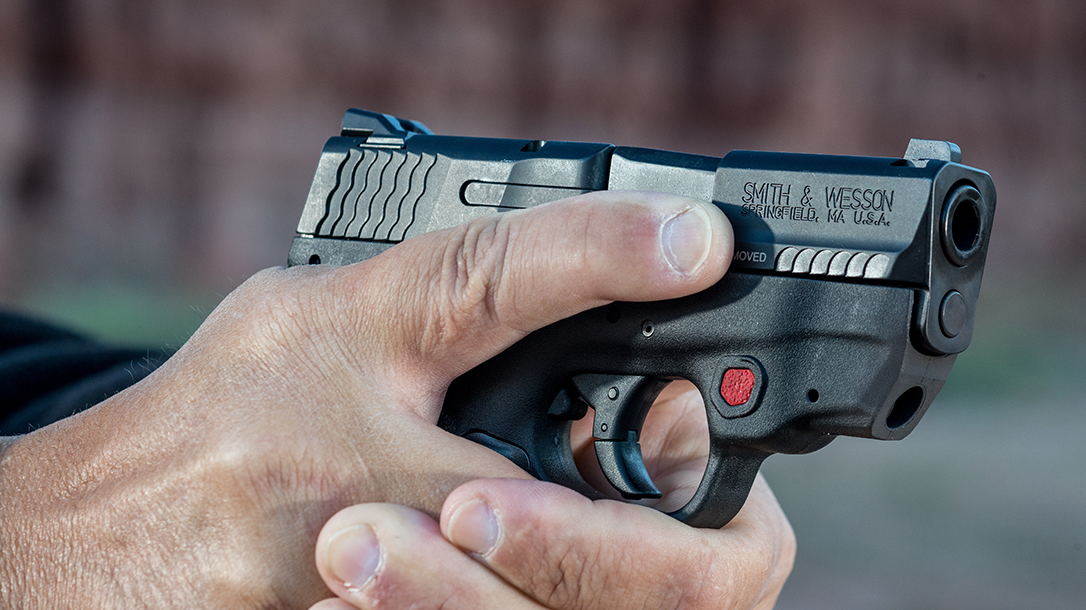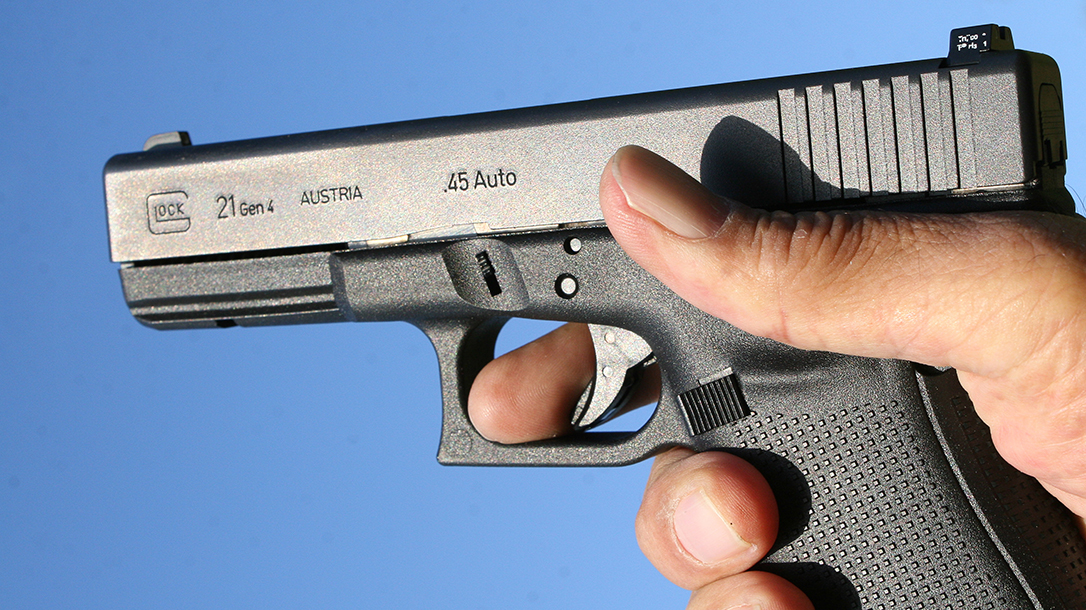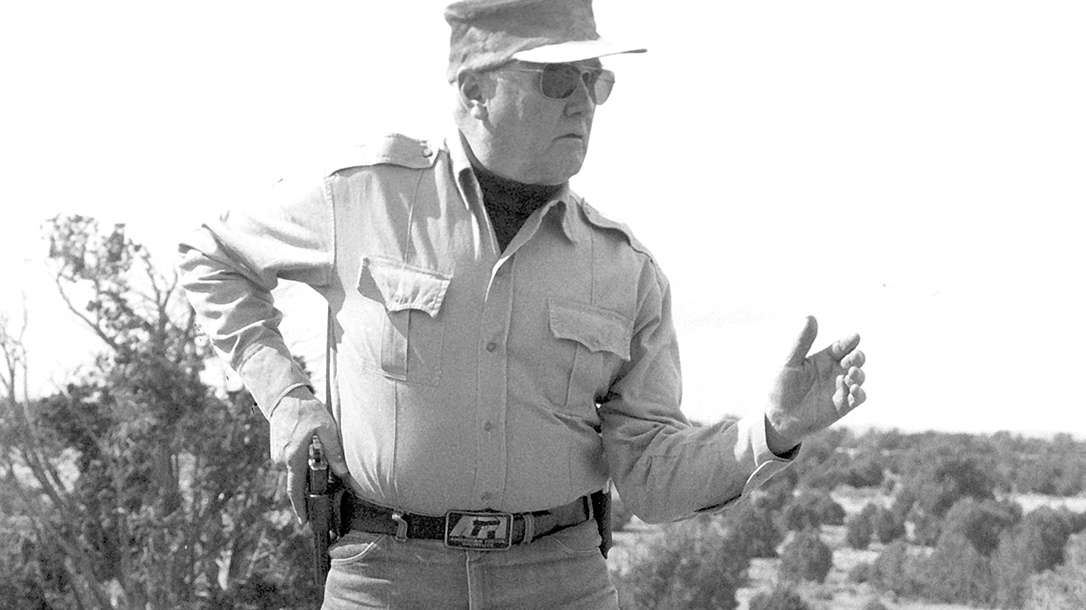In truth, you can’t guarantee that an accidental or negligent discharge will never happen, just as you can’t guarantee you’ll never be in a car crash. That’s up to the vicissitudes of fate. However, can you address the typical causes?
Absolutely. And an ounce of prevention is always worth a ton of cure.
Advertisement — Continue Reading Below
At this point, there’s almost always a semantic argument over “negligent” vs “accidental” discharge. Some argue that any discharge that wasn’t intentional is negligent and there’s something to be said for that. Others may insist otherwise.
With that all aside, here are five tips that should keep you from ever suffering a negligent discharge, if followed.
The First Laws of Gun Safety
As we all know, the first of Col. Cooper’s 4 Laws of Gun Safety is to treat all guns as if they are loaded, even if you know that they are not. Following this axiom doesn’t physically do anything for you — or for that matter anyone or anything — it inculcates a mindset.
Advertisement — Continue Reading Below
Specifically, a mindset that guns need to be handled with care. Guns are neither evil nor good; they are merely objects. They have, however, great destructive potential if used with evil intentions or without care. Therefore, they should be accorded the appropriate level of respect.
The Third Law of Gun Safety
Then you have the third of Col. Cooper’s 4 Laws of Gun Safety: Keep your finger off the trigger unless you’re ready to shoot. Granted, the wording changes depending on where you read it, but the gist is always the same.
You’ve seen “Black Hawk Down,” right?
Advertisement — Continue Reading Below
This point doesn’t really need much elaboration — guns generally don’t go off if you don’t touch the trigger.
Avoid Negligent Discharge? Avoid Excessive Handling
Perhaps a corollary to the first rule would be “don’t touch the gun unless you have a reason to do so.”
Advertisement — Continue Reading Below
Think about it this way: the longer your commute, the greater the chances you’ll be in a car accident. There are more cars on the road that you’re in proximity to, longer exposure to inclement weather and so on. That means more chances for you or someone else to make a mistake or for conditions to cause an accident.
Similarly, the more you handle your gun, the more chances there are for something to go wrong. It should go from the safe into a secure concealed carry holster with adequate trigger guard protection and retention. It shouldn’t come out except for cleaning, placing it into the safe, to safely fire at the range, or if you need to use it in defense of yourself or others.
If you aren’t engaged in holstering your carry gun, storing it or otherwise using it in an appropriate manner, you should leave it alone. The more you handle it, the more chances there are for something to happen inadvertently.
Advertisement — Continue Reading Below
Just ask this guy:
Holster with Care
You also need to take great care while holstering. The most popular handgun of today is the poly-framed striker-fired compact or subcompact. Glocks, Smith and Wesson M&P pistols, and so on and so forth are the pistols being put in safes and in concealed carry holsters more often than anything else. Design features on these pistols include passive trigger safeties and lighter trigger pulls than the double-action revolvers and double-action autos.
Advertisement — Continue Reading Below
In other words, all that needs to happen to discharge the pistol is for the trigger to be touched and pulled, and the trigger is easily pulled. This has led to a number of accidental/negligent discharges.
One of the most common types? Gun go in holster; gun go boom!
What happens is something snags the trigger while holstering the pistol. This can be a wilting edge of a leather holster that’s past its prime, or a piece of clothing that gets into the holster after drawing the pistol. The gun goes in the holster, something snags the trigger and now the paramedics need to get involved.
Advertisement — Continue Reading Below
How does one keep this from happening?
By taking care while holstering. Check the holster before inserting the pistol, and make sure that it’s clear of obstructions while inserting the pistol.
Check and/or Clear Before Touching the Trigger
There are a number of reports of officers shot in police stations or officers having accidental discharges while cleaning duty weapons, often of the poly striker variety, because the trigger has to be pulled to strip the gun for cleaning and lubrication. This has also happened to civilians. The pistol isn’t checked before the trigger pull … and guess what happens.
Advertisement — Continue Reading Below
The same thing can happen with any gun, let alone the Glocks and similar pistols, so don’t get the impression that the author isn’t down with the tactical tupperware.
There’s a quasi-substantiated rumor out there that famed gun writer, quickdraw specialist and Border Patrolman Bill Jordan accidentally shot a colleague in a similar fashion. The story goes he was demonstrating dry-fire techniques, but then sat the gun down and got up to do something else. Someone reloaded the pistol without telling him, and he resumed the dry-firing only for the gun to go off … fatally striking a fellow agent in the next office.
Terry Kath, the guitarist for the band Chicago, was a known gun collector. One night while entertaining a friend, he picked up a handgun that, unbeknownst to him, had a round in the chamber though it contained an empty magazine. He pointed it out, put it to his temple and pulled the trigger.
Any time you’re going to touch the trigger without intending to shoot something, check and clear first. This will prevent an accidental or negligent shooting.
If you carry smart, and treat your firearm with the respect it deserves, that will go a long way toward preventing a negligent discharge.
About the author: Sam Hoober is a contributing editor for Alien Gear Holsters, a subsidiary of Tedder Industries.


























